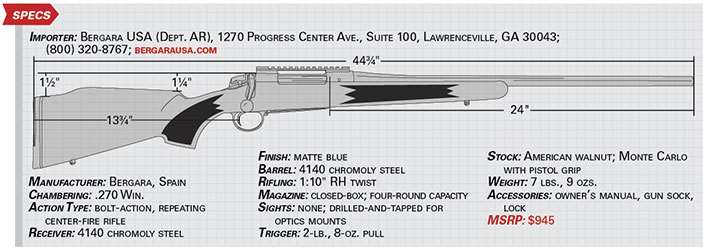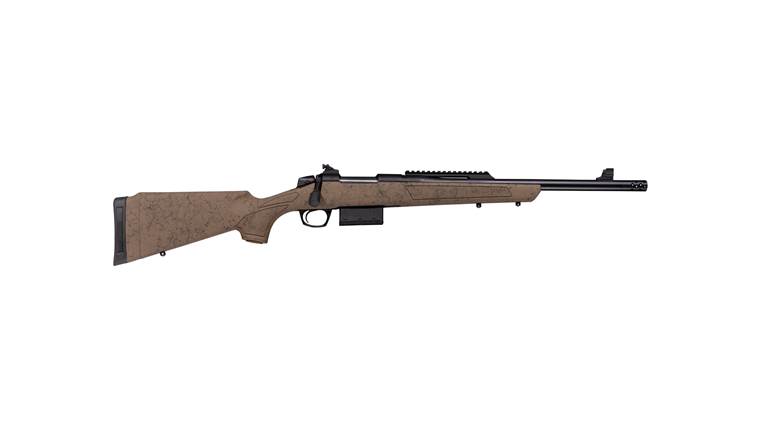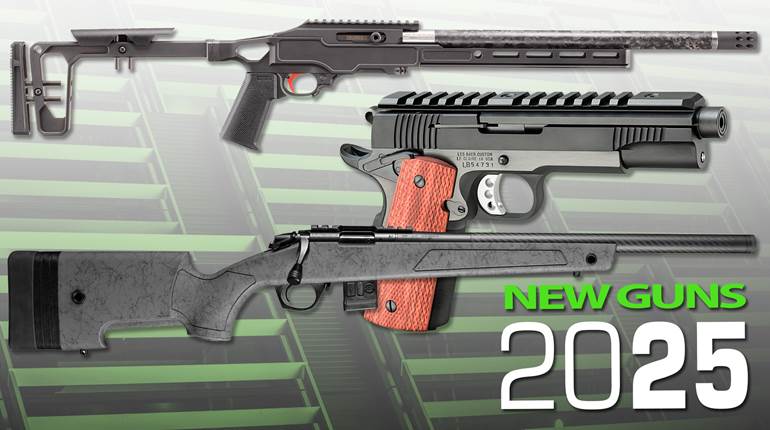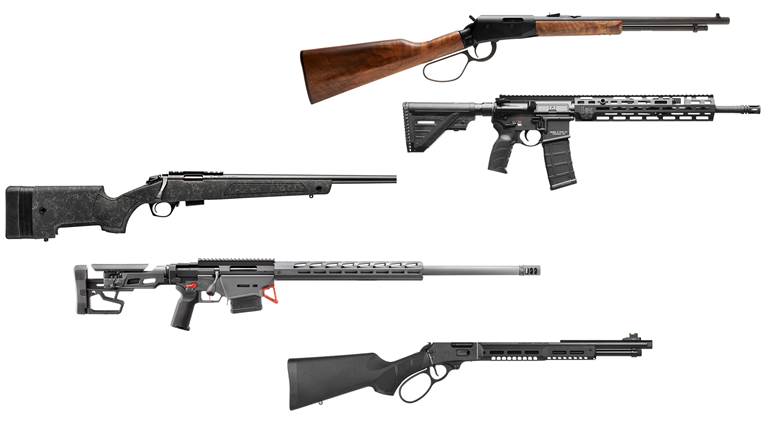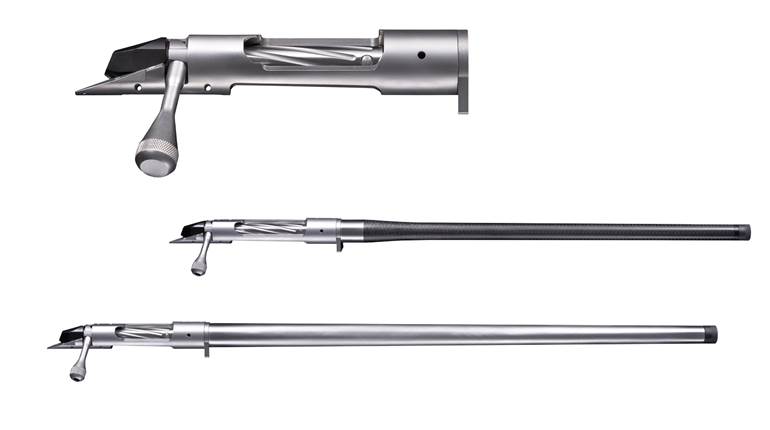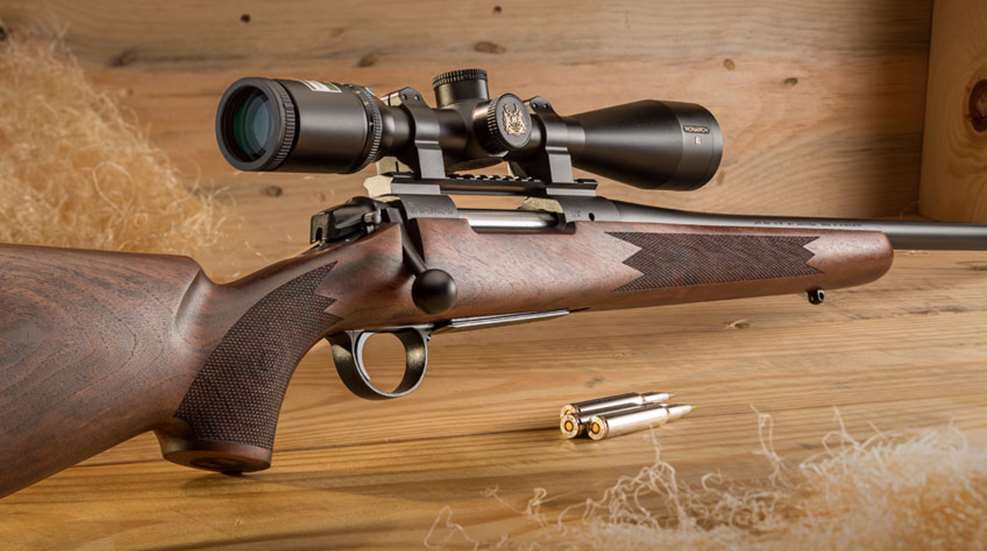
Along with designing, engineering and building American-made rifles, Bergara USA is importing its entry-level B-14 rifle series. Bergara’s entrance into the bolt-action rifle market began with its OEM supply of excellent Spanish-made barrels. Designed in the U.S. for American shooters, the B-14 rifle series is made in Spain and brought to market with value and performance in mind.
One such rifle in the series is the B-14 Timber reviewed here, which is differentiated from the rest of the line by its American walnut, Monte Carlo stock design. A synthetic-stock model (Hunter) is available, as is a variant in a lighter, trimmer and more American-style walnut stock (Woodsman). The Timber’s nicely figured stock freely floats the action’s barrel and is oil-finished while also providing attachment points at both the front and rear for sling swivels. The raised cheekpiece pairs well with optics and makes for a more positive and consistent cheekweld. The grip features a radius more common to target and varmint rifles, with a palm swell protruding from the right side that bestows a fuller feel to the grip. Both left and right sides of the grip area contain panels with 12-line-per-inch diamond-shaped and laser-cut checkering. Forward of the rifle’s hinged metal floorplate, on either side of the fore-end, are two additional generous sections of checkering.
The B-14 Timber’s stock uses cylindrical-shaped, aluminum anchors acting as pillars that are adhered to the walnut via a bonding agent. The pillars provide a consistent attachment point within the stock for the barreled action—a feature contributing positively to a rifle’s accuracy. A non-bedded recoil lug rests in a loose-fitting recess just forward of the front action pillar and is attached to the barreled action.
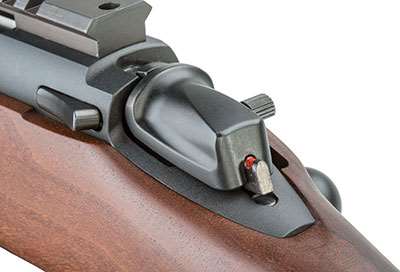
Like many of the great military and sporting bolt-action repeaters of the past, the B-14 features dual, opposing locking lugs at the front of its bolt. Like Winchester Model 70s, its coned breech, or the front face of the bolt’s locking lugs, has been beveled. The barrel’s breechface is also angular and designed to mate with the bolt. This provides for smoother and faster chambering of the rifle’s push-feed system, along with consistent lock-up.
The bolt body, at first glance, appears to be one-piece, but toward the rear a brass-colored pin and minor diameter change reveals that the bolt handle is a separate piece. The bolt’s aluminum knob is threaded and removable. The bolt face is deeply counter-bored, and a plunger-style ejector nests just opposite the claw extractor. A gas-relief hole and a relief cut under the extractor-side lug are visible on the underside of the bolt head. This cut rides around an internal guide rail, stabilizing the bolt and minimizing its play within the receiver. The bolt’s end cap hides a steel cocked-striker indicator—a handy safety feature. Additionally, the B-14 uses a two-position safety mounted on the right side of the action’s tang. At the rearmost and left side of the receiver is an articulated bolt release. Overall length of the receiver measures just less than 9" with a width of 1.36". Drilled and tapped to accept optical mounts, the B-14's round receiver does not come with a rail as pictured here.
The action on our test sample was fitted with a 24", sporter-contoured and target-crowned barrel chambered for .270 Win. Bergara has become well-known for its five-step barrel-making process. The process for the B-14 Timber starts with a straightened barrel blank of 4140 chromoly steel.
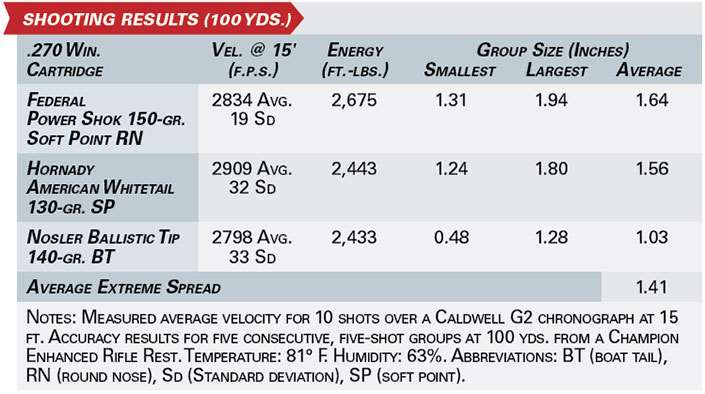
The steel blank receives a rough bore that acts as a guide for the next three-step diamond-tipped honing process. These three honing bits provide for near-flawless land and groove surfaces and have given Bergara barrels their fame. The honed barrel is then button-rifled—a process that involves drawing a carbide button through the steel hole, leaving twisted rifle grooves. For the myriad of .270 Win. bullets, the barrel’s 24"-length and six-groove rifling spun toward the right at a rate of 1:10" is deemed optimal by Bergara. The barrel is then finished by a stress-relieving process with an end result that is an ultra smooth and consistent barrel. Our testing revealed this particular rifle has a preference for 140-gr. cup-and-core bullets, whereas the monolithic bullets used during initial function testing provided sporadic accuracy.
Aesthetically, the B-14 Timber turned heads at the range and dropped jaws when its MSRP was mentioned. Throughout our testing we found that not only did the rifle look great, it performed just how a bolt-action rifle ought to. Recoil is mitigated effectively by use of the Crush Zone recoil pad, action fitment, stock design and straight-grain structure. However, the rifle balanced out to 7 lbs., 9 ozs., which may be a deterrent to shooters seeking a lightweight rifle option. We found the weight added to its stability, and was especially noticeable during field use. Combining this size and weight with the rifle’s crisp trigger breaking at 2 lbs., 8 ozs., we were able to place very accurate, unsupported, off-hand shots. With accuracy being more than sufficient for a hunting rifle, the 140-gr. Ballistic Tip load made by Nosler led the bunch from the five consecutive, five-shot group testing. Magnification and design of the Nikon Monarch 4-16X 42 mm scope was a good pairing of optics-to-cartridge-to-gun.
As we have seen with this particular rifle, and others from the company’s line, quality and care have gone into each unit.

